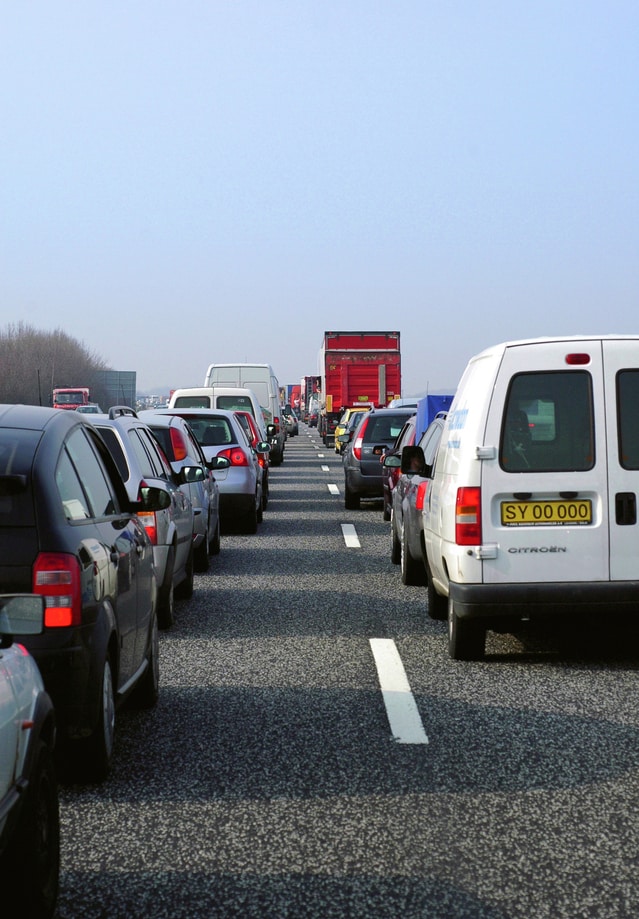
If you live, work or travel in southern Ontario, you’ve probably spent your fair share of time on the 400 series highway system, including highway 400, 401, 403, 404 and 427 to name just a few. If you use a highway as a part of your regular commute, high traffic volume, winter weather crawls and regular lane closures due to accidents will often leave you sitting bumper to bumper, longing to get home and forget about this agonizing part of your day. When you do finally make it home, kick off your shoes and decide to curl up to watch some TV, what should come on as you flip through the channels? Perhaps it’s Discovery Channel’s Heavy Rescue: 401, a new reality program that focuses on the rescue vehicles, towing companies, and police officers who spend even more time of this highway system than you do – often working in dangerous conditions.
In this blog post, I look at some common causes of accidents on the 400 series highways and provide some safe highway driving tips.
A Safe Highway System
Although regular 400 series users will have passed by the scene of many accidents, Ontario’s highway transportation system actually has one of the lowest accident and fatality rates in North America. Considering that as many as 400,000 vehicles use the 400 series every day, and the portion of Highway 401 crossing Toronto is the busiest stretch of highway in the world, this safety record is especially impressive.
Researchers have found that particular design features of the 400 series deserve a good portion of the credit for the low accident rate. Although newer portions of the highway system were designed to support speeds of up to 130 kilometres per hour, the speed limit on most sections of this system is only 100 kilometres per hour. Lower speed limits and ample room to execute turns and merges reduce the likelihood of some accidents.
Moreover, a special version of the Jersey wall – a concrete barrier designed to separate lanes from oncoming traffic – called the Ontario Tall Wall has been installed to help prevent large transport trailer trucks from crossing into oncoming lanes of traffic or flipping over in the event of a crash.
Accidents on Highways Still Happen
Despite all of the safety features, as depicted on Heavy Rescue: 401, rescue vehicles are still called into action every day as car accidents result in serious damage, injuries or death and can bring traffic on these roads to a standstill. As we’ve detailed in other blog posts (See: Common Causes Car of Accidents in Ontario), human error is overwhelmingly to blame when car accidents occur, and highway driving poses heightened risks for making such errors.
- Fatigue – Whether it’s transport truck drivers on a long haul, commuters who are exhausted while trekking to work early in the morning or home from work in the evening, or vacationers travelling across the country, many people on highways are making long trips or may not be as rested and alert as they should be. As 400 Series signs advise: “Fatigue Kills – Take a break.” Ensure you’re well rested before beginning any trip by getting at least seven hours of sleep. Make frequent stops on longer trips where you can get out of the car and walk around. And, if possible, share driving duties so you can recharge and remain alert while operating the vehicle.
- Distraction – Turning your attention away from the road for only a second or two while changing the radio station, grabbing a snack or consulting a map, can be dangerous at any time while driving. But when travelling at very high speeds, the amount of time needed to perceive and respond to a hazard increases and every second counts. Keep alert, scan the road regularly and stay a safe distance away from cars ahead of you. Never use a handheld device while driving. If you need to do anything other than drive, pull off the highway when it’s safe and take a break.
- Distance – In addition to keeping a safe distance from other vehicles while driving (especially when merging or changing lanes), be sure you are safely away from danger if you need to stop while on the highway due to a car problem, accident, or any other reason. Pull off the travelled portion of the road as much as possible and keep your hazard lights flashing to ensure other drivers see you. Exercise extreme caution if you need to exit your vehicle. When you are ready to proceed, make sure you have ample room to drive back onto the road and get up to the speed of traffic.
Unexpected conditions
In addition to preventable human error, sometimes factors outside a driver’s control can increase the risk of highway accidents.
- Road Conditions/Construction – Although most 400 series roads are in a fairly good state of repair, potholes and other hazards on the road, such as car parts or roadkill, can cause you or other drivers to swerve or slow down unexpectedly. Maintaining a safe speed and a safe distance from other cars can reduce the risk of these hazards, reducing the chances of being involved in a collision. Be mindful if construction workers, snow plows or other patrols are doing work on the highway. You may need to make a lane change, slow down quickly, or change positions in a lane to give them more space to work.
- Weather/visibility – Southern Ontario’s 400 series highways have some notorious sections that are prone to snow squalls during the winter. While research on accidents on these highways confirms that winter weather heightens the risk of road accidents, any type of inclement conditions can make driving more challenging. In addition to driving according to conditions (reducing speed, increasing distance between vehicles) pay attention to weather forecasts and Ministry of Transportation advisories prior to taking trips and avoid travelling in unsafe conditions whenever possible. Ensure your vehicle is visible (this also applies to regular nighttime driving) and that all headlights and brake lights are in good working order.
Stay Safe
No one wants to see, or even worse, to be a part of an accident on these roadways; but seeing the stories behind rescue operations and the work that goes into making the 400 series highways among the safest in North America on programs like Heavy Rescue: 401 gives you some reassurance. First responders, maintenance workers and patrols are ready to be called in at a moment’s notice if something goes wrong.
If you or a loved one has been involved in a car accident on the 400 series highways in Ontario, you know the story doesn’t stop with those first responders. If you have questions about accessing the available statutory accident benefits or seeking damages if you believe another driver acted negligently, personal injury lawyers can help you on your road to recovery.
If you’ve been involved in a car accident on a 400 series highway or other roadway in Ontario and have questions about the process to obtain benefits or other compensation, please contact personal injury lawyer Adam Wagman at adamwagman@hshlawyers.com or 416-361-0988.






